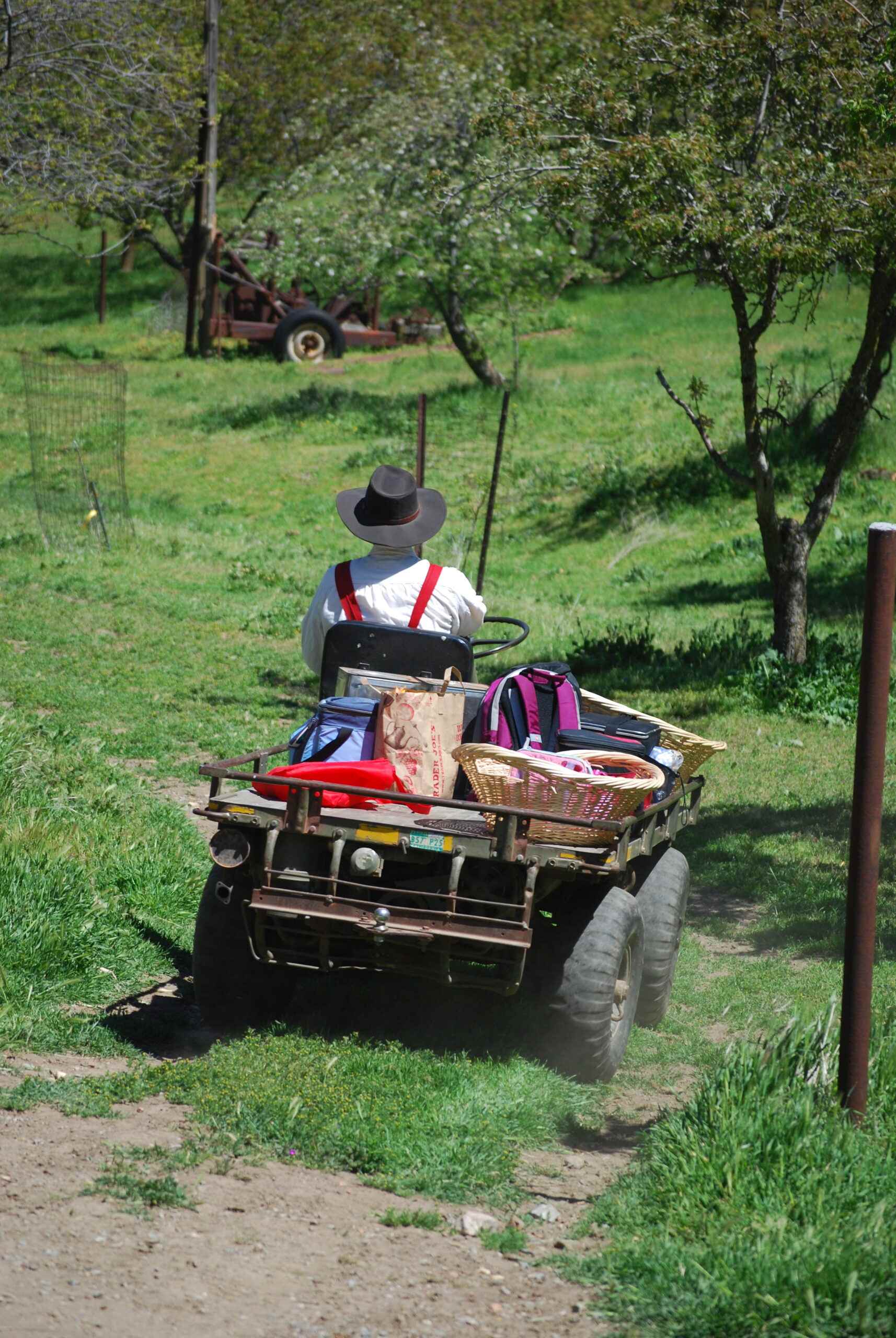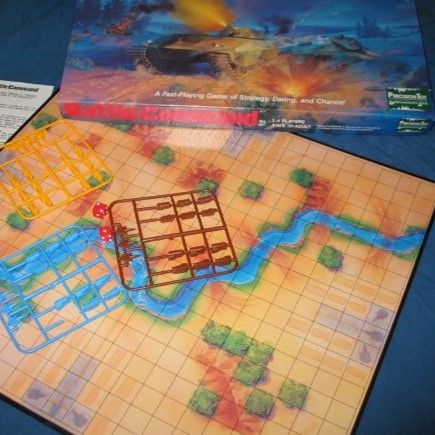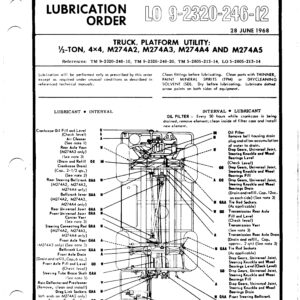An “Army Mule” Mechanic
When I tell people I was an Army Mule mechanic, I often get the response, “Don’t you mean a large animal veterinarian?”
An “army mule” is a vehicle which was designed by jeep-maker Willys-Overland during World War 2. The official designation was M274 “Army Mule”, Truck, Utility. The Army Mule is a 960 pound, 4-wheel-drive, 4-wheel-steer vehicle built to carry up to 1,000 pounds–twice the 500 pound cargo of the WW2 army jeep–across almost any terrain. The “mule” was designed so that if a wheel got blown off, you could just shift the cargo over and drive the mule using its three remaining wheels.
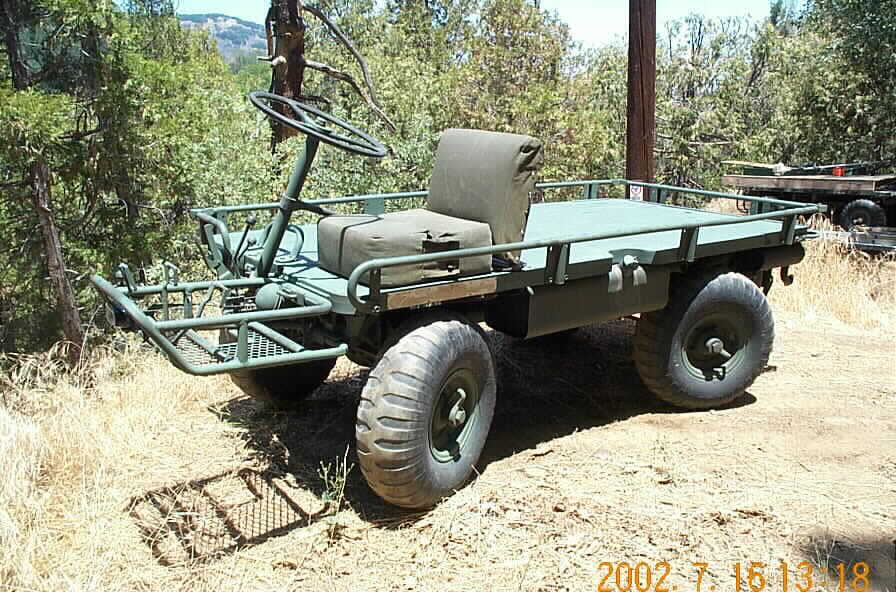

The original M274 and M274-A1 vehicles had a 4-cylinder gasoline engine with 2 mufflers. The 4-cylinder engines proved problematic, so the military switched over to a 2-cylinder engine and had many of the original mules converted to the 2-cylinder engine.
The M274 A2-A5 Army mule versions had an A042, 2-cylinder, gasoline engine with a single muffler. The engine was air-cooled so it included an air blower fan and shrouding around the engine to channel the air to keep the engine cool while running. Spark is provided to the 2 spark plugs from a magneto. The mule was originally pull-cable-start from the front of the vehicle, with a choke control beside it on the front deck rib. Great for summer, but winter it could be a little persnickety, so I converted all the mules I worked on to be electric start. I used a Volkswagen “automatic” starter with a new, welded-on gear to match the mule’s flywheel.
The mules I worked on were primarily for use in avocado and orange citrus groves in southern California. Most of them had been purchased as military surplus from the supply depot near Barstow, CA. These mules were usually “dead” from being “run into the ground without the proper maintenance.” Their owners would hire me to repair these machines that could go between the rows of their trees–often used as picking platforms–and carry heavily-loaded crates of fruit.
The Army Mule had excellent clearance, using “drop gears” to keep the axles higher than normal. It was also made to go under water. To do this, it had to have the pre-cleaner in the front removed and replaced with a snorkel tube. Valves had to be closed on the fuel tank and engine to keep water out. The soldiers could pick a suitable river fording area and, with soldiers wating on the other side of the river, steer the mule toward the river, step off, and let the vehicle drive itself into the water, go under water, and drive up the opposite shore a moment later.
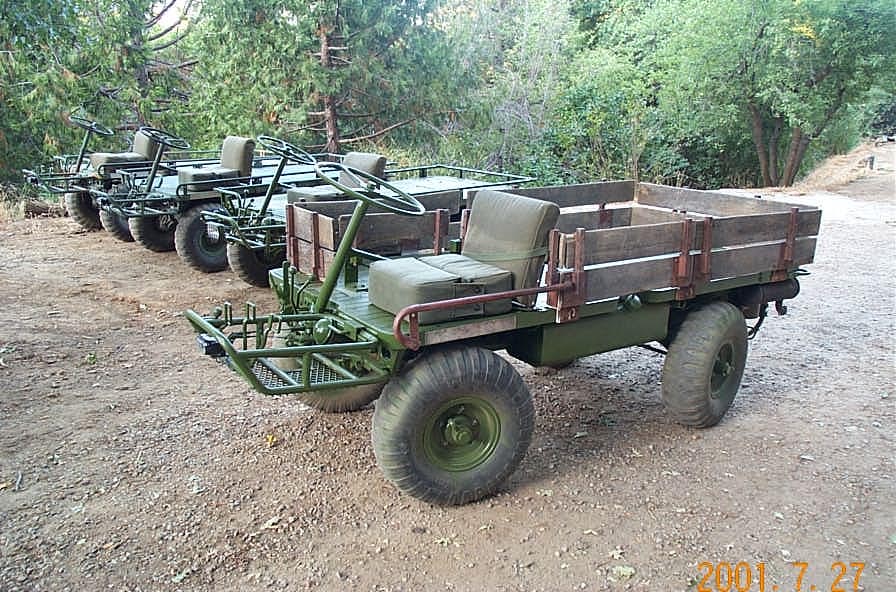
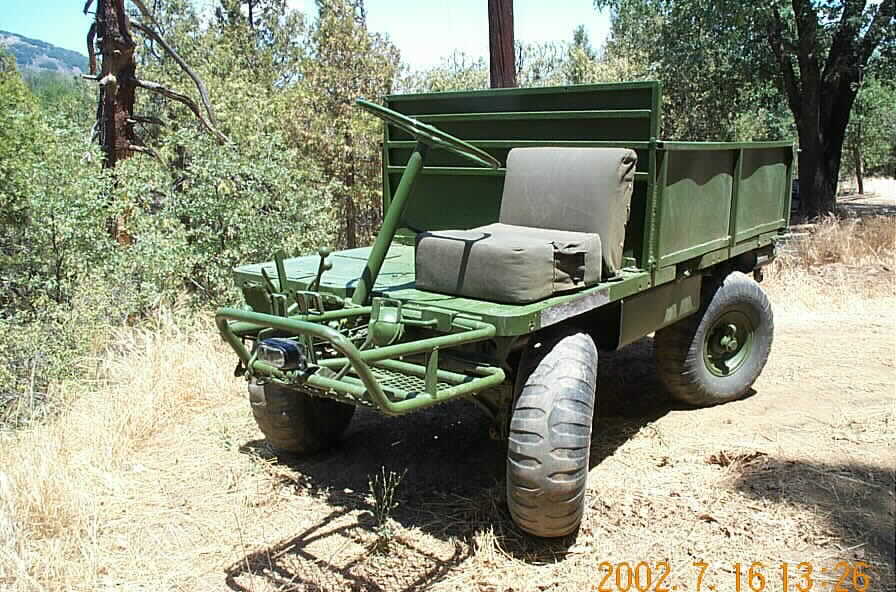
This is a steel-boxed version I made for a rancher in Ramona, California. The box was bolted onto the mule deck and had a latching tailgate at the back. Very useful for carrying wood, soil, and even horse manure if you need to clean out the horse corrals.
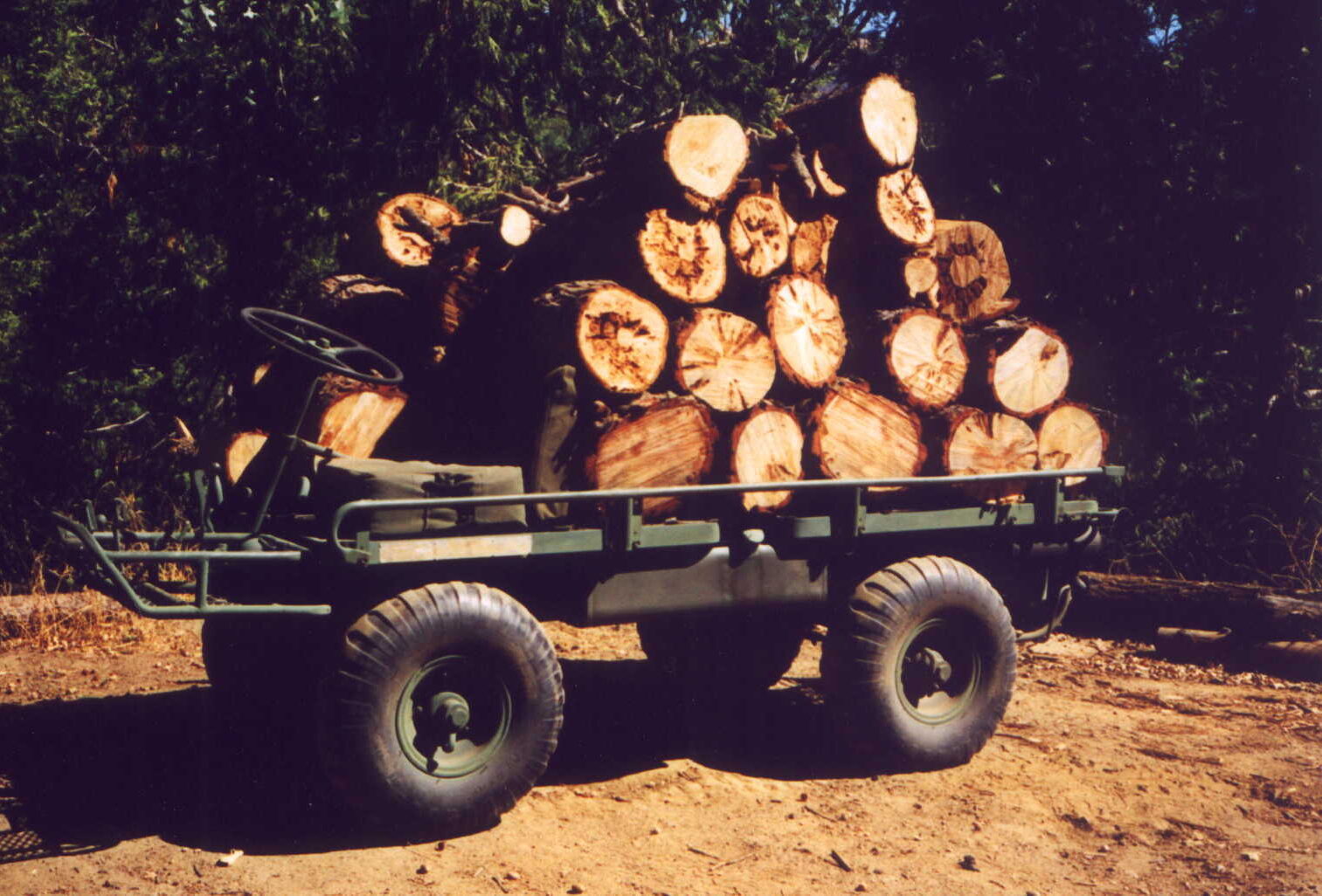
I rebuilt mules for people for many years. The mule is a very tough, reliable, and rugged vehicle. We even used one of our mules to retrieve some railroad from an abandoned mine. If the mule is properly taken care of–maintained–it will still be operational decades from now. We have been using army mules on our ranch since 1991 and they are still going strong!
When we were on the ranch, we would take our kids for rides through the pastures and all over. Mule rides were always a big hit with everyone. Nowadays, you would want a roll bar on it. We also used the army mule as a mobile workbench when we were doing construction. It was the perfect height and could carry all our saws, shovels, picks, bagged concrete, and other supplies. The mules proved vital to the building of our narrow gauge, Gold Mining Railroad!
The Army Mule can also be dropped by parachute. It has steel loops at each wheel hub to attach lines to. (A friend of ours was in the marines and they were practicing dropping them from airplanes. The parachute didn’t deploy on one of the mules. When it hit the ground, there weren’t too many reuseable parts left!)
The mule has a top speed of 25 miles per hour–the speed of many of the army tanks of World War 2–and has a range of 90-150 miles on its 8-gallon fuel tank, depending on how fast it is driven.
A pretty amazing vehicle!
–Gregory O. Smith, children’s adventure mystery book author.
